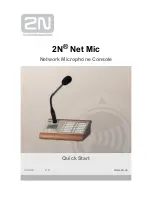
Congratulations on selecting the LSR Linear Spatial Reference Studio Monitors.
They represent the sum total of our research and development efforts in sound reproduc-
tion. While we don’t expect you to read the entire manual, we do suggest section 2 to get
started. At that time, you should have a system to listen to while you intensely study the rest
of the manual for maximum performance.
Beginning with a blank CAD screen, today’s equivalent to a clean sheet of paper,
the LSR products have been based on fundamental research into all aspects of monitor
design. JBL designed the entire system starting with the materials and topologies of the
individual transducers, through to the final assembly of the diecast parts. The results are
incredibly accurate reference systems with high dynamic capabilities and astonishingly low
distortion.
New LSR Technologies
Linear Spatial Reference A measurement and design philosophy that takes into account
many additional factors beyond on-axis frequency response. The overall performance of
the systems are optimized within a wide listening window for exceptional performance in a
variety of acoustic spaces. Attention to these critical aspects results in a rock solid image
that remains consistent throughout the entire listening field.
Linear Dynamics Aperture™ Contoured ports virtually eliminate high-end turbulence
found in traditional port designs. This provides more accurate low frequency performance
at higher output levels.
Titanium Composite High Frequency Device Using patented technology, the high frequency
device incorporates titanium and composite materials to improve transient response and
reduce distortion. By reducing distortion in the lower operating range, where the ear is
most sensitive, ear fatigue is radically reduced.
Elliptical Oblate Spheroidal (EOS) Waveguide Designed for a targeted listening window of
+/- 30˚ horizontally and +/- 15˚ vertically, the EOS provides a frequency response through
the entire window of 1.5 dB from on-axis. This allows listeners, even far off-axis to hear an
accurate representation of the on-axis response.
Workstation Boundary Compensation
Low and mid frequencies can be adjusted to optimize performance where boundaries such
as video monitors and desktop surfaces are present in the monitoring environment.
Section 1: Introduction
1
Содержание LSR25P
Страница 1: ...1 Linear Spatial Reference LSR25P Studio Monitor System Preliminary Owner s Manual ...
Страница 5: ...5 ...
Страница 12: ...7 Section 3 General Operation ...
Страница 16: ...11 Section 4 Specifications ...
Страница 20: ......







































